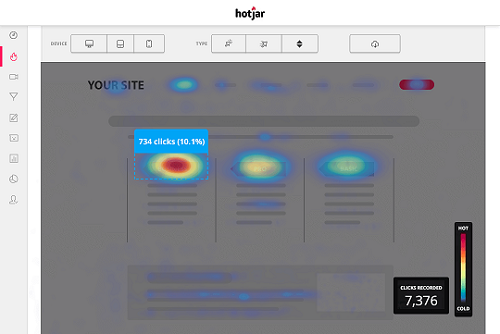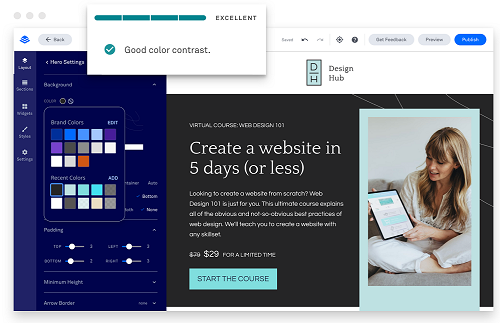Social Media Has Changed The Way We Experience Sports
From Wimbledon to the UEFA Euros, followed on swiftly by the Tokyo 2021 Olympics, the world's been indulged with sports straight after the easing of COVID-19 restrictions. There has been a noteworthy difference this time with social media encouraging its users to engage with sports in a much more personalised and emotive way, creating discourse.
Wimbledon’s famous tennis couple, Matteo Berrettini (gentlemen’s singles, 2021 finalist) and Ajla Tomljanović (ladies’ singles, 2021 quarter-finalist) have caught the eyes of their fans on social media with their reaction photos and videos to their partner’s matches. In fact, “I feel 10 times more stressed when I’m watching her match than when I’m actually playing my match” Berrettini stated. The tennis players’ own social media accounts, alongside news accounts, have created a more personalised image for these athletes. In turn, this has led to increased levels of fan engagement.
The Olympics in Tokyo taught us about Tom Daley’s, gold Olympic medallist diver’s, newly acquired lockdown knitting skills. He was photographed sitting in the stands, knitting a Team GB jumper. He explained that: “When I got to Tokyo, I wanted to make something that would remind me of the Olympics to look back on in the future.” He not only posted this on his knitting-based Instagram account but also gained a whopping 921,486 followers since the opening ceremony, which is a 44% increase. Interestingly, Tom Daley has pointed out that knitting and crocheting have helped him as an athlete: “There’s a long wait between the synchro and the individual and there’s a lot of time to think. My time to think has been replaced with knitting and it’s been such a great and welcome distraction for me to be mindful, but also resting.” Moreover, Daley revealed that other competitors use colouring books, phone games, music, or meditation to switch off.
Although Wimbledon and the Olympics brought us some more entertaining forms of social media, the Euros seemed to take a darker turn following the final match between England and Italy. The penalty-taking English players, Marcus Rashford, Jadon Sancho and Bukayo Saka, experienced numerous racist comments across various social media platforms. The FA condemned this racist abuse. The UK government then pushed for legal action, drafting the Online Safety Bill. Additionally, Twitter stated that they had specific plans in place, developed by working alongside the football authorities, in advance of the Tournament. On the night of the final, Twitter’s automated tools kicked in immediately to identify and remove 1,622 Tweets. Twitter has been taking wider steps since to combat racist abuse targeting the football community, continually building even more accurate abuse identification systems using extensive data analytics. For example, a new product feature that temporarily auto-blocks accounts using harmful language, so that they cannot interact with other users, will be trialled soon. It must be noted that Rashford, Sancho and Saka received more support following these events than abuse. For instance, a giant, eye-catching digital mural was created by SPORTbible on Trafford Road.
During the Tokyo Olympics, the Norway women’s beach handball team utilised social media to take a stance against the Olympics dress code by choosing to wear shorts, like their male counterparts (instead of a bikini). They were fined €1,500 for ‘improper clothing’, which was offered to be paid by singer and songwriter P!nk. Following this event, Jessica Ennis-Hill, double Olympic medal holder for track and field athletics, stated that she “lived in fear of a wardrobe malfunction” and proclaimed that “athletes should be able to wear what they want”. The Norwegian team were also swarmed by an influx of fan support, who praised as history makers on their Instagram account.
Ultimately, this also raises the question of what it means for athletes to engage with fans via social media. Historically, this has been a huge ‘no-no’ to prevent confidential information from being leaked as well as to prevent derogatory comments from being made. In fact, athletes used to have little interaction with their fans. At most, there would be a press conference, an autograph session and a few fan letters. However, nowadays, clubs and sponsors want athletes to have a strong online presence. One major reason for this is the marriage between sports marketing and social media. In fact, athlete endorsements yield an average 4% increase in sales and a 0.25% increase in stock value. Also, a brand is more valuable and can reach a wider range of consumers via a well-known individual. For example, Lebron James has 5 times the amount of followers that Nike has. This has become so important for brands that they generally have ‘social media clauses’, such as offering a bonus for obtaining a certain number of followers, being paid per tweet/post or even having a mandatory tweeting/posting policy for a certain duration of time.
Looking ahead, sports organisations want to keep fans engaged in an increasingly technologically developing world. Fans want to experience and be involved in sports more so than ever before. This is where social media may be utilised to augment fan decision-making opportunities. For example, fans may be able to vote on team substitutes, team colours and logos as well as participate in online Q&As.
Dilara Devin
A recent law graduate, with a passion for writing, reading and all things media. A lover of music and have a growing interest in cooking.
LinkedIn: Dilara Devin
______________________________________________________________________
Editorial notes: By Mili Ponce
The challenge for traditional broadcasters
There used to be a time when it was very easy to be a broadcaster because everybody was switching on the television and watching a TV screen and it was the same TV screen everywhere. There were three, four, 10, 20 channels, but that was the only way to consume content. That has changed, obviously for rights holders, for broadcasters and also for brands in general.
Media rights are, by far, one of the main sources of income for clubs and sports organizations and it has been proven that the centralization of media rights is most profitable for the big leagues. But who has control over the content now? Everybody!
Anyone attending a sports match can record the most important moments of a match on their phones, even the athletes themselves, moments that broadcasters used to have the exclusivity for. Anyone can record moments of the event that even broadcasters might miss, for example, athletes' families reactions, the teams' coaches reactions or even athletes' reactions when losing or winning while they are no longer in the public eye.
The value of what the audience and the athletes can broadcast and share on social media could potentially surpass the value of what broadcasters share on their channels. Even more when new phones have better cameras year-on-year.
What happens then with exclusivity? Broadcasters pay huge amounts of money to have the rights to broadcast a match exclusively, but what if someone on social media uploads videos of the match, behind the scenes videos and videos that may be more interesting to the new generations on social media than what used to be interesting to the previous generations?
The future of broadcasting in sports is a new challenge.
In Tokyo 2020 some athletes recorded moments that were exclusive to specific broadcasters and they were asked to delete the videos from their social media, but what about the videos recorded by the audience? Would they have social networks filtering videos of specific moments in sports that broadcasters paid exclusivity for?
Absolutely. It’s the biggest challenge that we have these days. One thing is that we connect with a certain audience, called the baby boomers, the Generation X, even the millennials. But we see that new people are getting into the market of consuming content—Generation Z, especially, and the generation Alpha if you want to go further—which is a group of people that have grown up in a digital world, have grown up in a world where content is not something you have to pay for in most cases. So, by having the accessibility to free content, these new generations find it strange that you have to pay. For broadcasters, the task is to create a premium product that still justifies payment for it.
Related Articles:
Dilara Devin – Writer/Editor
A recent law graduate, with a passion for writing, reading and all things media. A lover of music and a growing interest in cooking.
LinkedIn: Dilara Devin
Social Media Has Changed The Way We Experience Sports
 Reviewed by Dilara Devin
on
Thursday, August 26, 2021
Rating:
Reviewed by Dilara Devin
on
Thursday, August 26, 2021
Rating:
 Reviewed by Dilara Devin
on
Thursday, August 26, 2021
Rating:
Reviewed by Dilara Devin
on
Thursday, August 26, 2021
Rating:

















 Entrepreneur, international speaker on Social Media Marketing. First one in the UK to write and speak in conferences about Twitter as a marketing tool. Consultant to Corporate Companies, Government Organizations, Marketing Managers and Business Owners.
Entrepreneur, international speaker on Social Media Marketing. First one in the UK to write and speak in conferences about Twitter as a marketing tool. Consultant to Corporate Companies, Government Organizations, Marketing Managers and Business Owners. Aspiring novelist with a passion for fantasy and crime thrillers. He hopes to one day drop that 'aspiring' prefix. He started as a writer and soon after he was made Executive Editor and Manager of the team at Social Songbird. A position he held for 5 years.
Aspiring novelist with a passion for fantasy and crime thrillers. He hopes to one day drop that 'aspiring' prefix. He started as a writer and soon after he was made Executive Editor and Manager of the team at Social Songbird. A position he held for 5 years. Musician, audio technician, professional tutor and a Cambridge university English student. Interested in writing, politics and obsessed with reading.
Musician, audio technician, professional tutor and a Cambridge university English student. Interested in writing, politics and obsessed with reading. Recently graduated with a BA in English Literature from the University of Exeter, and he is about to study an MA in Journalism at the University of Sheffield. He is an aspiring journalist and novelist; in his free time he enjoys playing chess, listening to music and taking long walks through nature.
Recently graduated with a BA in English Literature from the University of Exeter, and he is about to study an MA in Journalism at the University of Sheffield. He is an aspiring journalist and novelist; in his free time he enjoys playing chess, listening to music and taking long walks through nature. Lucy is an undergraduate BSc Politics and International Relations student at the London School of Economics and Political Science.
Lucy is an undergraduate BSc Politics and International Relations student at the London School of Economics and Political Science. Anna Coopey is a 4th year UG student in Classics at the University of St Andrews in Scotland. She is a keen writer and researcher on a number of topics, varying from Modern Greek literature to revolutionary theory.
Anna Coopey is a 4th year UG student in Classics at the University of St Andrews in Scotland. She is a keen writer and researcher on a number of topics, varying from Modern Greek literature to revolutionary theory.
